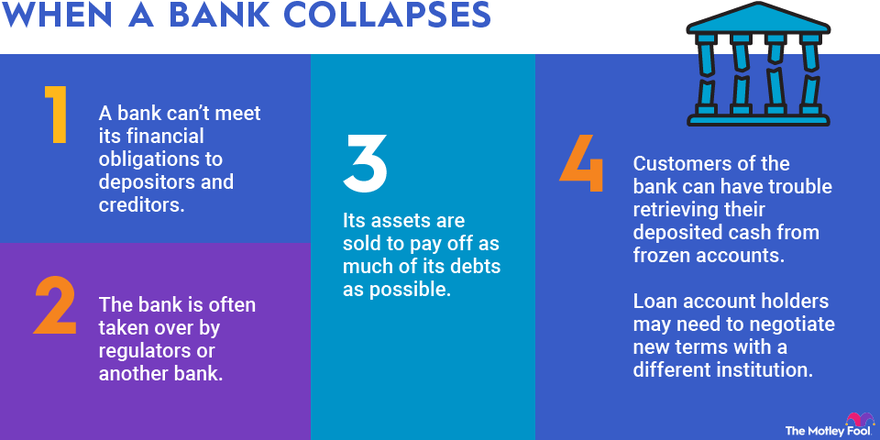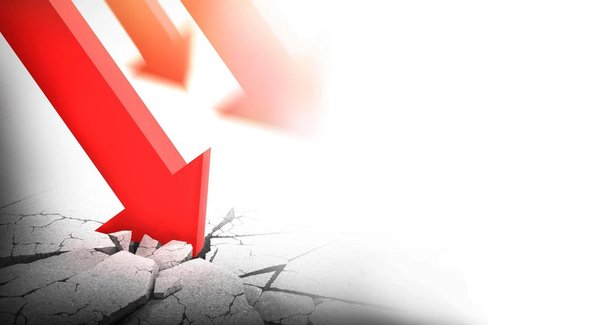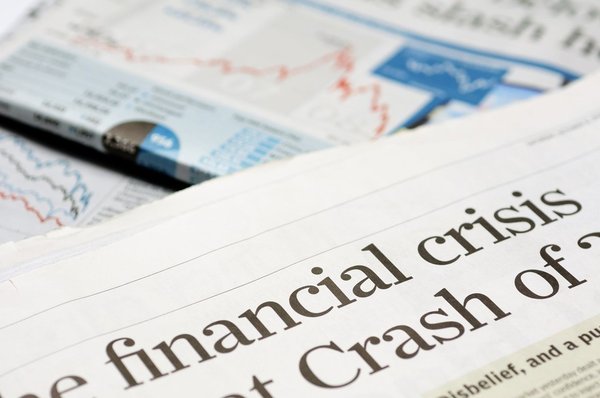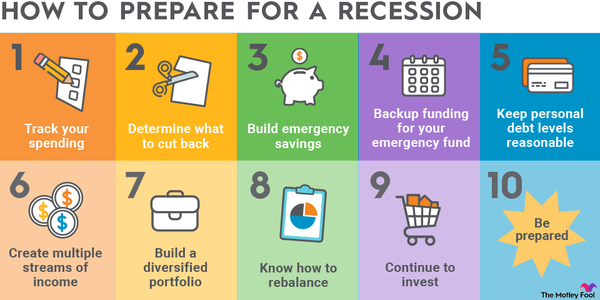A bank collapse can be a scary and unexpected event. After all, banks are typically viewed as bastions of financial stability, offering safekeeping for our savings and making loans to individuals and businesses. But banks can and do fail, and the consequences of these collapses can send shock waves throughout the financial system.

So let’s dive into the ins and outs of bank collapses. I’ll explain what bank collapses are, provide a few painfully recent examples, show you the forces that can cause them, and unpack the effects they can have on the larger economy.
What happens when a bank collapses?
What happens when a bank collapses?
A bank collapses when it can’t meet its financial obligations to depositors and creditors. The financial institution doesn’t have enough funds to pay its own interest expenses and other bills, and the funds deposited by its clients may also be at risk. In this state, the bank is often taken over by regulators or another bank in a receivership. Its assets, which can include customer accounts, loan contracts, real estate holdings, valuable service operations, and even intellectual property, are sold to pay off as much of its debts as possible. The fallout from a bank collapse can be widespread, hurting the bank's customers, employees, creditors, and even the entire economy.
The bank and its shareholders are not the only stakeholders who suffer in a banking crisis. The bank's customers and account holders can be hit hard too. Banks are supposed to keep our money safe, but the financial safety net can go away with no warning when a bank runs out of cash and collapses.
Exactly how the collapse affects customers and account holders can vary depending on the situation, but a couple of common consequences are worth noting.
Customers of a collapsed bank can find it difficult or even impossible to retrieve their deposited cash from frozen accounts. Most deposits in U.S. banks are covered by the Federal Deposit Insurance Corporation (FDIC). That helps to some degree, but it's not a magic wand that automatically heals all wounds. The insurance is not unlimited and can take some time to kick in. Even insured deposits may be hard to come by if the bank's failure is part of a broader economic crisis.
If you have loans with a failed bank, you also may find yourself in a difficult position. Your bank will usually try to sell the loans to another bank or debt collector. If it finds a buyer, you'll simply continue making payments as before, just to a different institution. From your perspective, not much will have changed.
But if your bank fails to find a buyer for your loan account, there can be hassles. You may have to negotiate new terms. The negotiator on the other side of the table could be another bank or the FDIC. The process is usually streamlined to handle the failing bank’s entire customer base in an efficient manner.
Still, there will be red tape and bureaucracy, and some accounts will likely need some tweaks with a human touch. This can result in changes to the interest rate, payment schedule, and overall loan terms. In a worst-case scenario, you could be on the hook for more money than anticipated.
Bank collapses in current events
Bank collapses in current events
A few major banks collapsed in the spring of 2023, driven out of business by inflation and interest rate hikes.
First, the crypto-friendly Silvergate Capital (NYSE:SI) institution closed its doors and began liquidating its assets due to a rapid decline in cryptocurrency prices. Signature Bank (NASDAQ:SBNY) and Silicon Valley Bank (NYSE:SIVB) soon followed suit, taken over by the FDIC when liabilities outstripped assets.
Many smaller banks found themselves on the brink of oblivion at that point until a consortium of 11 larger banks staged a $30 billion rescue attempt.
The fallout from the crisis is unknown, but some experts believe the long-term effects could be game-changing. A few banks and financial institutions may benefit from the collapse of their competitors; others may struggle to survive. Only time will tell exactly how it might shape the future of the global economy.
What causes a bank to fail?
What causes a bank to fail?
Many factors can contribute to a bank's downfall, either alone or -- more often -- combined with other trouble spots. Here are some common culprits to consider:
- Mismanagement: A bank is only as strong as its leadership. If the C-suite team makes bad decisions or engages in fraudulent activity, it can spell disaster.
- Bad loans: Banks make money by lending funds to borrowers. When borrowers can’t manage their obligations to the bank and default on their loans, the bank's balance sheet takes a hit. A bank with too many bad loans on its books can become insolvent.
- Economic downturns: When the economy is rough, it can ripple throughout the financial system. Take the inflation crisis of 2022. The Federal Reserve Board used a series of heavy-handed interest rate increases to check rising prices. The one-two punch of high inflation and rising interest rates led to several high-profile bank collapses.
- Liquidity problems: Banks need to have enough cash on hand to meet the demands of their deposit account holders. If a bank experiences an unexpected "run" on deposits or can’t obtain short-term funding, it can quickly find itself in dire straits.
- Regulatory issues: Banks face heavy regulation designed to prevent risky behavior and sloppy money management. Violating these regulations exposes a bank to unnecessary risks. And when regulators find out about this bad behavior, the bank can face hefty fines or even lose its banking charter.
Of course, this is a simplified overview of some possible causes behind bank failures. Reality is messier and much more complicated. Many different factors can contribute to a bank's collapse. This issue is a complex and nuanced one.
How does a bank failure affect the market?
How does a bank failure affect the market?
Before the 2023 inflation-related concerns over banks, there was a full-fledged bank disaster in 2008. Looking back at that event more than 15 years later is helpful since we have the benefit of hindsight and can analyze the long-term fallout.
The American housing market ran red-hot for many years, with home prices and the volume of houses under construction roughly doubling from 1996 to 2006. Unfortunately, many banks applied lax approval standards to mortgage loans during this period, hoping to capture extra fees. Subprime mortgages were repackaged and resold as investment-grade mortgage-backed securities.
But low-quality loan sales couldn’t last forever, and many consumers began defaulting on their loans in 2007. The banks that held failed mortgage contracts ran low on financial assets. Major banks and mortgage originators filed for bankruptcy in 2008. The names should be familiar, even now. Fannie Mae and Freddie Mac were restructured by federal regulators. Bank of America (BAC -0.21%) bought Merrill Lynch, and JPMorgan Chase (JPM 0.06%) picked up Washington Mutual and Bear Stearns. Lehman Brothers is now part of the British money center bank Barclays (BCS 0.58%).
The failed banks all had excessive exposure to low-quality mortgage-backed securities and not enough cash on hand to overcome a sudden wave of defaults. Washington Mutual was the largest bank collapse in U.S. history. Lehman’s collapse was even larger, although the financial services firm wasn’t a traditional bank.
People with deposit accounts and loans from the failed banks were largely moved over to the survivor companies that bought them with minimal changes. The Lehman takeover was an exception to the orderly process; some of the firm’s hedge fund accounts went through the renegotiation wringer with Barclays for the next five years.
The financial crisis that followed is known as the Great Recession. The stock market crashed hard. Many businesses closed forever. Unemployment skyrocketed. The banking system has worked under heavier regulation since then. Some banks were deemed "too big to fail" and propped up by a $3.6 trillion quantitative easing program, injecting cash into struggling banks through planned bond purchases.
The bank collapses of 2008 changed the banking system, with massive long-term effects on everything from the job and housing markets to stock investments and household budgets. A large-scale bank failure can be a very big deal.
Related investing topics
Should you be worried about bank failures?
Should you be worried about bank failures?
This overview of the causes and effects of bank collapses may have revealed some uncomfortable truths but shouldn’t stop you from buying bank stocks with a long-term buy-and-hold strategy. Keep in mind that bank stocks can be a valuable investment in a diversified portfolio. Cyclical ups and downs might occur from time to time, but top-quality bank stocks are typically quite safe in the long run.
Should you be worried about bank failures? Not necessarily. Hold your investments for years or even decades, diversify your portfolio, and do your homework before putting your cash to work in the stock market, and good things are likely to happen to your portfolio. In particular, bank stocks tend to serve income investors well with robust cash flows and often-generous dividend yields.














